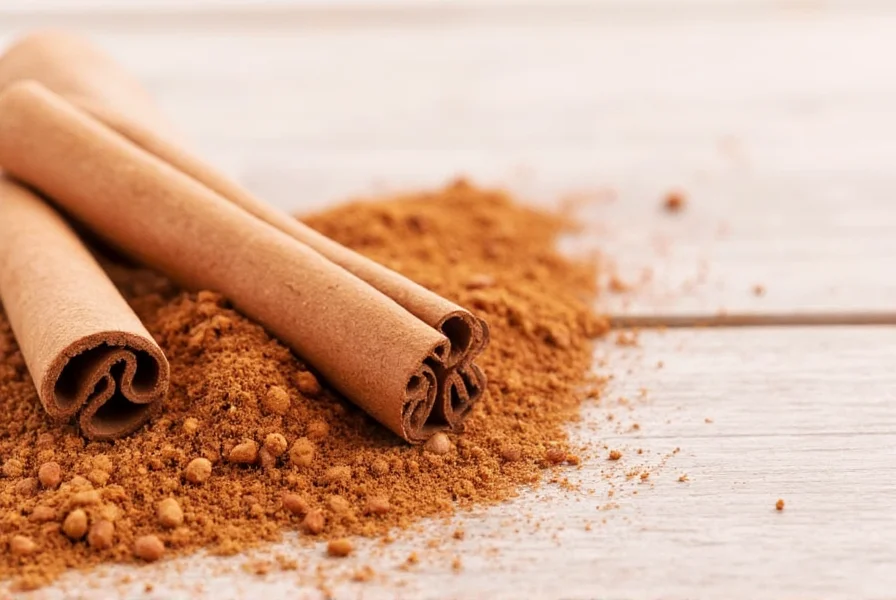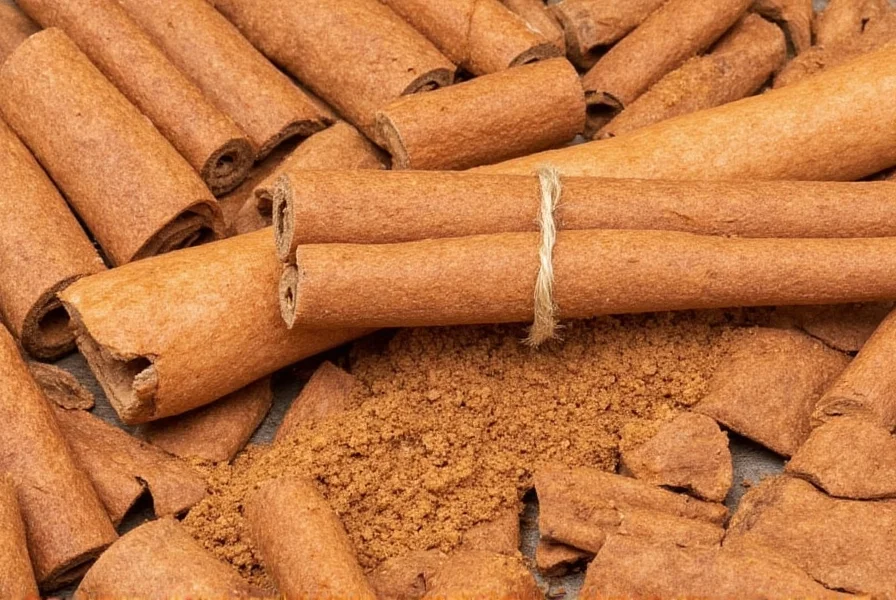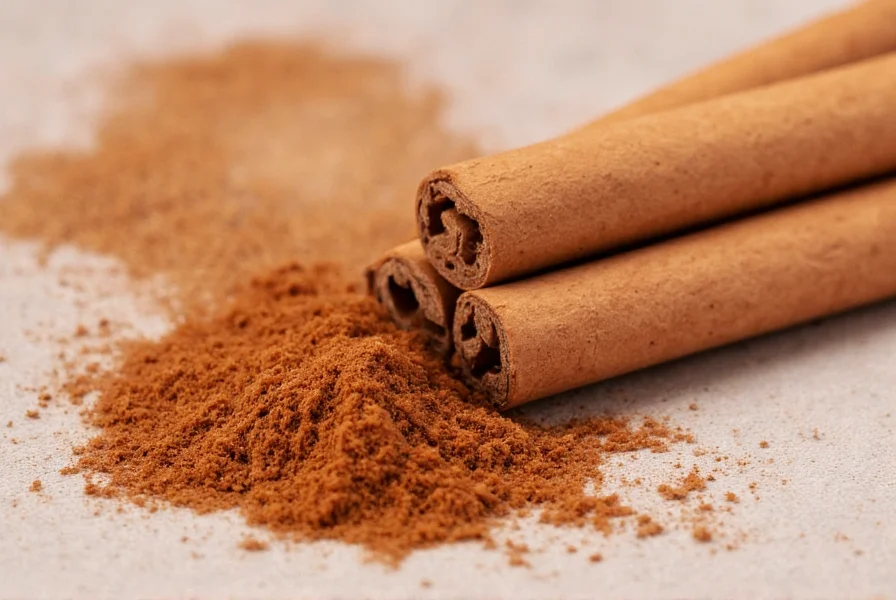When exploring the question is cinnamon a spice, the answer lies in understanding both botanical origins and culinary classification. Unlike herbs, which derive from leafy green plant parts, spices originate from seeds, roots, bark, or other non-leaf components. Cinnamon specifically comes from the inner bark of tropical evergreen trees in the Cinnamomum family, harvested by stripping the bark which then curls into characteristic quills as it dries.
| Spice Type | Scientific Name | Primary Origin | Distinguishing Characteristics |
|---|---|---|---|
| Ceylon Cinnamon | Cinnamomum verum | Sri Lanka | Thinner, more fragile quills; complex, citrusy flavor; lower coumarin content |
| Cassia Cinnamon | Cinnamomum cassia | China | Thicker, harder quills; stronger, more pungent flavor; higher coumarin content |
What Makes Cinnamon Qualify as a Spice?
The classification of is cinnamon considered a spice depends on several defining characteristics that distinguish spices from other flavoring agents. Spices are typically:
- Derived from non-leafy parts of plants (bark, roots, seeds, flowers)
- Used in dried form
- Originating primarily from tropical regions
- Employed for flavoring, coloring, or preserving food
Cinnamon perfectly aligns with these criteria. The harvesting process involves removing the outer bark from Cinnamomum trees, then carefully scraping the inner bark which is rolled into quills. After drying, these quills become the familiar cinnamon sticks, which can be ground into powder. This transformation from tree bark to culinary ingredient exemplifies why what makes cinnamon a spice is rooted in both its botanical origin and processing method.

Cinnamon vs. Herbs: Understanding the Distinction
Many people wonder about the difference between cinnamon and herbs, particularly since both are used to flavor food. The key distinction lies in the plant part used:
- Herbs come from the leafy, green parts of herbaceous (non-woody) plants
- Spices come from other plant parts including bark (cinnamon), roots (ginger), seeds (cumin), or flowers (saffron)
This fundamental difference explains why cinnamon cannot be classified as an herb. While fresh herbs typically provide bright, grassy notes, spices like cinnamon offer deeper, more complex flavors that often intensify when dried. Understanding this distinction helps clarify why is cinnamon a spice or herb has a definitive answer in culinary science.
Historical Context of Cinnamon as a Spice
Cinnamon's status as a valued spice spans millennia. Ancient Egyptians used it for embalming and as a flavoring agent as early as 2000 BCE. In medieval Europe, cinnamon was so prized that it was worth more than gold by weight. This historical significance reinforces cinnamon's classification as a true spice rather than a common kitchen herb.
The spice trade routes established specifically for cinnamon and other spices shaped global commerce and exploration. Unlike herbs which could be grown locally in many regions, cinnamon's tropical origin made it a genuine spice commodity requiring international trade networks—another characteristic feature of true spices.

Modern Culinary Applications of Cinnamon
Today, cinnamon remains one of the world's most popular spices with diverse applications across global cuisines. Understanding cinnamon bark spice uses reveals why it maintains its spice classification:
- Sweet applications: Baked goods, desserts, and fruit preparations
- Savory applications: Middle Eastern and Indian curries, Moroccan tagines
- Beverages: Mulled wines, chai teas, and specialty coffees
- Preservation: Natural antimicrobial properties help preserve foods
The versatility of cinnamon across both sweet and savory domains demonstrates why it functions as a true spice rather than being limited to a single culinary application like many herbs. Its ability to transform dishes with relatively small quantities is another hallmark of quality spices.
Types of Cinnamon and Their Spice Characteristics
Not all cinnamon is created equal when considering types of cinnamon spice. The two primary varieties have distinct characteristics that affect their culinary use:
- Ceylon cinnamon ("true cinnamon"): Grown primarily in Sri Lanka, this variety features multiple delicate layers of thin bark. It has a more complex, citrusy flavor profile and contains significantly less coumarin, making it preferable for regular consumption.
- Cassia cinnamon: The more common and less expensive variety found in most supermarkets, primarily from China and Indonesia. It has a stronger, more pungent flavor and thicker, harder quills. Higher coumarin content means moderation is advised for regular consumption.
Professional chefs and spice connoisseurs often specify which type they're using because these varieties function differently in recipes, further cementing cinnamon's status as a nuanced spice rather than a simple flavoring agent.
Scientific Classification Supporting Cinnamon's Spice Status
From a botanical perspective, cinnamon's classification as a spice is unambiguous. The spice comes from the genus Cinnamomum, which includes approximately 250 species of evergreen trees. The harvested portion is specifically the phloem layer of the inner bark, which contains the essential oils responsible for cinnamon's distinctive aroma and flavor.
When the bark dries, the essential oil composition changes slightly, concentrating the characteristic compounds like cinnamaldehyde (60-90% of essential oil), which gives cinnamon its signature flavor. This transformation during the drying process is typical of true spices, distinguishing them from fresh herbs which lose potency when dried.
Conclusion: Why Cinnamon Unquestionably Qualifies as a Spice
The evidence confirming is cinnamon a spice is definitive across botanical, historical, and culinary dimensions. As a dried bark product from tropical trees used globally to enhance flavor, cinnamon meets every criterion for spice classification. Its distinction from herbs lies in both its plant origin and processing method, while its historical value and modern culinary versatility reinforce its status as one of the world's most beloved spices.
Is cinnamon a spice or an herb?
Cinnamon is definitively classified as a spice, not an herb. The distinction lies in their plant origins: spices come from non-leafy parts of plants (like bark, seeds, or roots), while herbs come from the leafy green parts of plants. Cinnamon specifically comes from the inner bark of Cinnamomum trees, meeting the botanical definition of a spice.
What makes cinnamon qualify as a spice?
Cinnamon qualifies as a spice because it meets all key criteria: it's derived from a non-leaf plant part (tree bark), used in dried form, originates from tropical regions, and is employed for flavoring, coloring, or preserving food. The harvesting process involves removing and drying the inner bark of Cinnamomum trees, which then curls into quills—the familiar cinnamon sticks.
What's the difference between Ceylon and Cassia cinnamon?
Ceylon cinnamon (Cinnamomum verum) comes primarily from Sri Lanka and features thin, delicate quills with a complex, citrusy flavor and lower coumarin content. Cassia cinnamon (Cinnamomum cassia), the more common supermarket variety from China, has thicker, harder quills with a stronger, more pungent flavor and higher coumarin levels. These differences affect both culinary applications and health considerations.
Can cinnamon be considered a seasoning rather than a spice?
While all spices are seasonings, not all seasonings are spices. Cinnamon is specifically classified as a spice due to its botanical origin (tree bark) rather than simply being a seasoning. The term "seasoning" is broader and includes salt, herbs, spices, and other flavoring agents. Cinnamon's specific derivation from tree bark places it firmly in the spice category.
Why is cinnamon sometimes confused with being an herb?
Cinnamon is sometimes mistakenly thought to be an herb because both herbs and spices are used for flavoring food. However, the confusion stems from not understanding the botanical distinction: herbs come from leafy parts of plants, while spices come from other plant components. Since cinnamon comes from tree bark rather than leaves, it's scientifically classified as a spice, not an herb.











 浙公网安备
33010002000092号
浙公网安备
33010002000092号 浙B2-20120091-4
浙B2-20120091-4